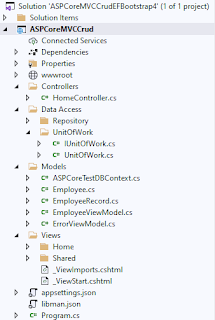Create An ASP.NET Core MVC CRUD Website Using RepoDB ORM And SQL Server

Hello All! This blog post illustrates on how to create an ASP.NET Core 5.0 MVC CRUD Web Application using RepoDB ORM and SQL Server. RepoDB is a hybrid-ORM library for .NET which is an alternative ORM to both Dapper and EntityFramework. This framework was created by Michael Camara Pendon. This project also integrates Bootstrap 4 for styling and Unit Of Work with Repository Design Pattern as the data mechanism. I also installed the Font Awesome 5 via Libman for showing icons to the button controls. So to get started, perform the following steps below. I. Project Setup 1. Create an Athletes table in your database using the script provided. This table will serve as the dataset for this project. USE [your_database] GO /****** Object: Table [dbo].[Athletes] Script Date: 5/5/2021 4:13:47 PM ******/ SET ANSI_NULLS ON GO SET QUOTED_IDENTIFIER ON GO CREATE TABLE [dbo].[Athletes]( [ID] [int] IDENTITY (1,1) NOT NULL , [Name] [varchar](100) NULL , [Age] [int] NULL , [Co...
